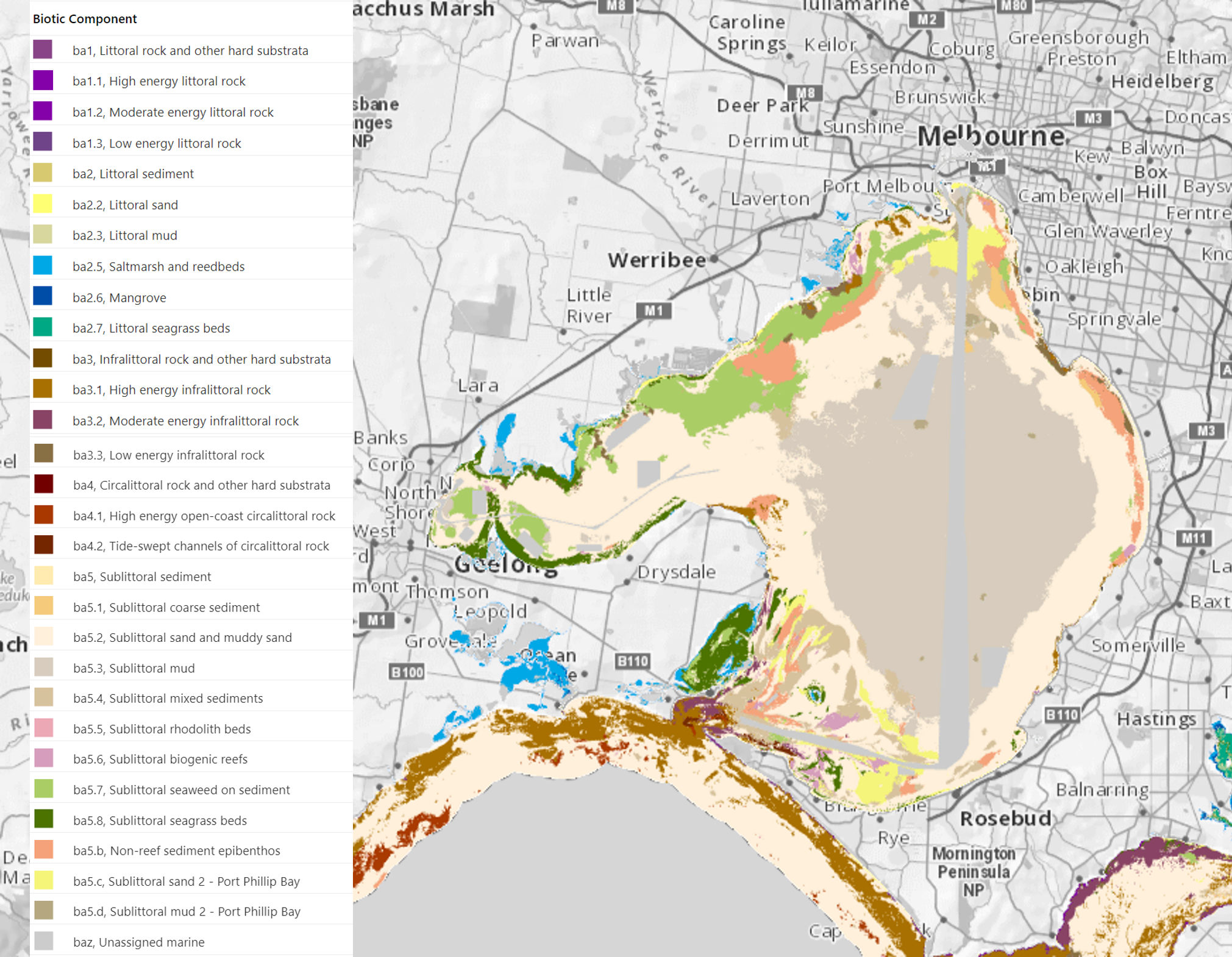What is seafloor integrity?
Seafloor integrity describes the ability of benthic marine ecosystems to retain their natural biodiversity and productivity to drive dynamic ecosystem processes, in light of the cumulative effects of multiple uses and activities operating in the marine and coastal environment.
Seafloor integrity could be a key indicator for evaluating the health of ecosystems by quantifying the effect of pressures and stressors on the environment.

The Seafloor Integrity Project is a Department of Energy, Environment and Climate Action (DEECA) funded cross-collaborative initiative led by Fathom Pacific partnering with several universities, industry bodies, and laboratories. The project aims to evaluate the current condition of benthic marine habitats and biological communities in the Bay by monitoring the physical, chemical, and biological components of the seabed.
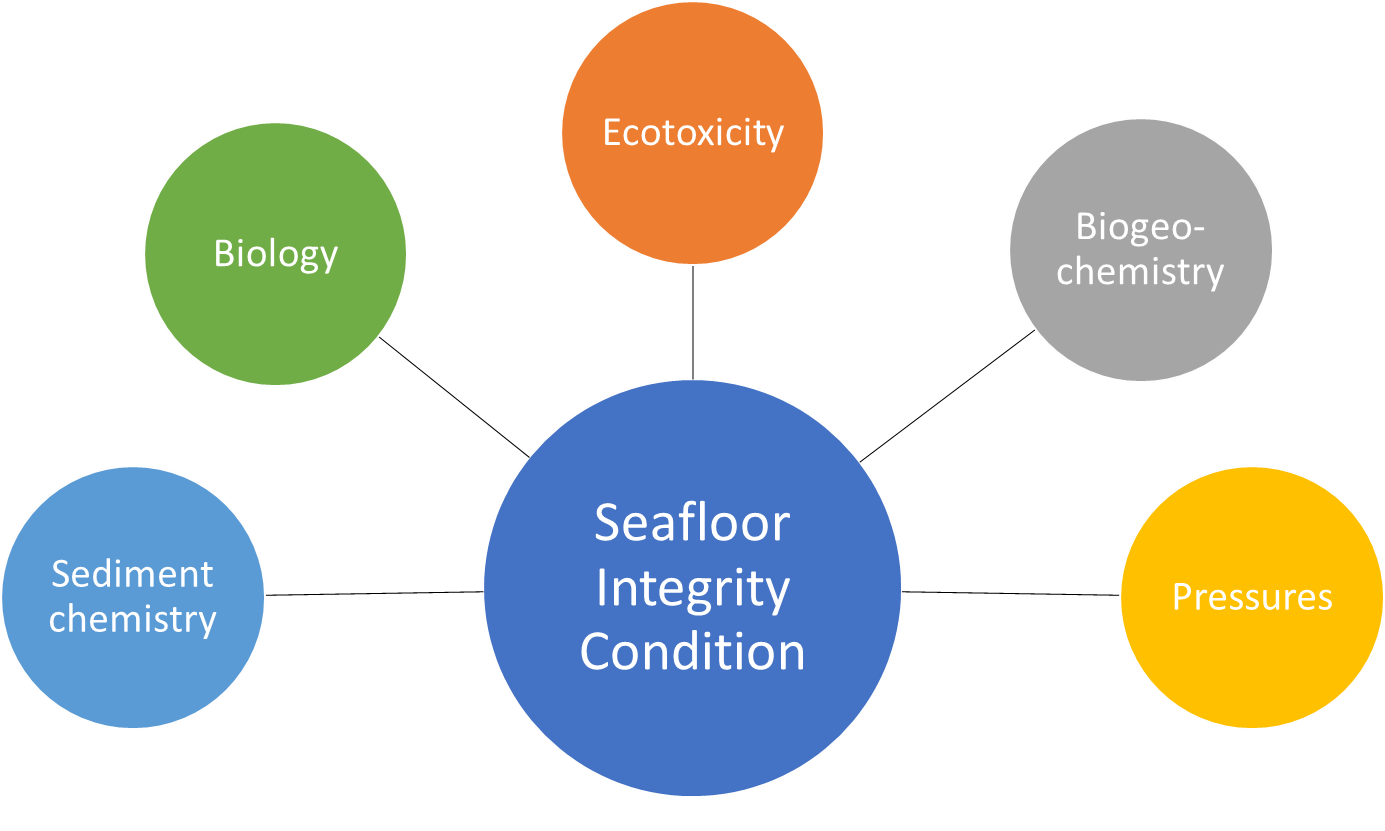
Policy context
Seafloor integrity is a critical concept for achieving the goals of the Port Phillip Bay Environmental Management Plan 2017-2027 (EMP).
The project aims to deliver on several EMP priority actions under the priority areas of Habitats and Marine Life and Nutrients and Pollutants as listed below.
- Action 6.1: Monitor indicator species and key habitats at priority locations.
- Action 6.2: Improve understanding of ecological processes, threats and pressures.
- Action 6.3: Improve the overall extent and condition of the Bay’s natural ecosystems.
- Action 3.1: Effectively maintain existing stormwater infrastructure and programs to mitigate loads to the Bay, or secure via equivalent means.
- Action 3.2: Prevent increases in nutrient loads from wastewater systems and, where practicable, reduce loads of other pollutants.
- Action 3.3: Ensure all urban and rural land use effectively controls impacts from stormwater and runoff, and that controls are in place to manage increases in loads.
Seafloor integrity is also one of 11 Good Environmental Status (GES) descriptors adopted by the Marine and Coastal Knowledge Framework (MACKF). Sustainability and GES are achieved when anthropogenic activities and subsequent impacts are managed effectively and do not limit the function or alter the inherent structure of the seafloor ecosystem.
Project objectives
The project consists of 5 study themes that holistically link the concept of seafloor integrity and provide a platform by which monitoring indicators can be identified and developed.
| Study themes | Core study components | Partner organisations |
|---|---|---|
| Sediment chemistry | Sediment contamination assessment including emerging contaminants. | |
| Biogeochemistry | Core incubations (muds) and benthic chambers (sands). | Southern Cross University |
| Biology | Autonomous Underwater Vehicle (AUV) and Remotely Operated Vehicle (ROV) imaging surveys. | Australian Centre for Robotics, Greybits Engineering |
| Ecotoxicology | Fish and invertebrate biomarkers analysing multiple tissues and endpoints. | La Trobe University |
| Database | Data integration in CoastKit. | Nordinson Studios |
The project aims to assess a wide range of benthic habitats across Port Phillip Bay from coastal coarse sand to deep muddy sediments. Site selection has been informed by historical monitoring locations and target areas of high and low anthropogenic activity, and will incorporate time-series data from previous studies, notably the Port Phillip Bay Environmental Study (1992-1996).
Study program
 To study the physical and chemical sediment properties:
To study the physical and chemical sediment properties:
- Forty-five sediment samples have been collected across Port Phillip Bay using a Ponar Grab.
- Samples were analysed to characterise grain size to understand bioavailability and toxicity of contaminants.
- Samples were analysed for a presence of inorganic and organic compounds and nutrients (for example pesticides, metals and emerging contaminants such as PFAS).

Biogeochemical processes play a critical role in regulating the impacts of nutrient loads into Port Phillip Bay that influence benthic ecosystem community composition and production. Processes were studied at the sediment-water interface including respiration, primary production, and denitrification. Fathom Pacific in collaboration with the Centre for Coastal Biogeochemistry (Southern Cross University) investigated:
- Diver hand cores were collected and analysed for Total Organic Carbon and Pigments at 42 sites.
- Sediment incubation cores were collected from a total of 12 sites of muddy sediments and analysed in a laboratory to understand gross productivity of sediments and measure microphytobenthos abundance using chlorophyll-a and phaeophytin.
- Benthic chamber cores were installed in-situ and monitored a total of 4 sites comprising of sandy sediments.
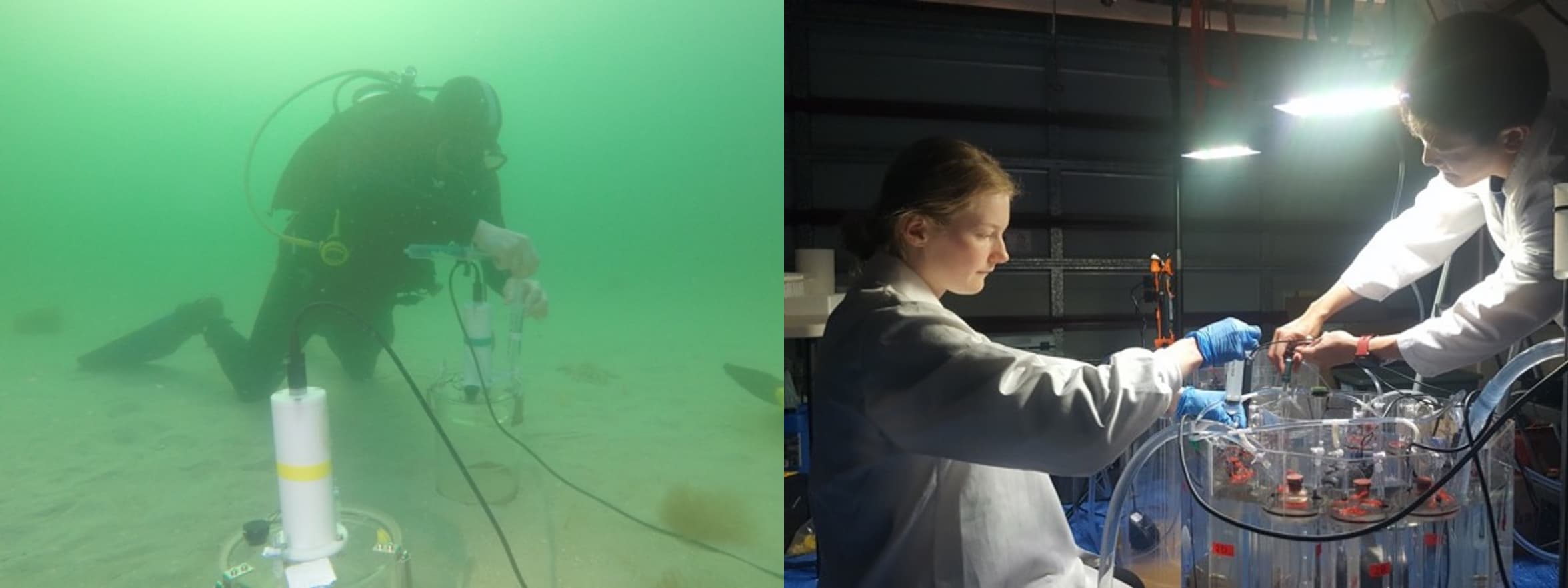
Underwater imaging surveys of the benthic ecosystem, using Autonomous Underwater Vehicle (AUV) technology, were undertaken to inform the identification of biological indicators of seafloor integrity and led by the Australian Centre for Field Robotics:
- AUV surveys were completed at 35 sites, each transect being 500m long and following a broad or dense grid design.
- Good imagery has been collected for 72 km of survey distance and consists of 410,000 images converted to orthomosaics.
- Image-based morphospecies identification, abundance scoring have been annotated using the software platform SQUIDLE+.
- ROV surveys are planned for 2024 and will be conducted by the Fathom Pacific team.
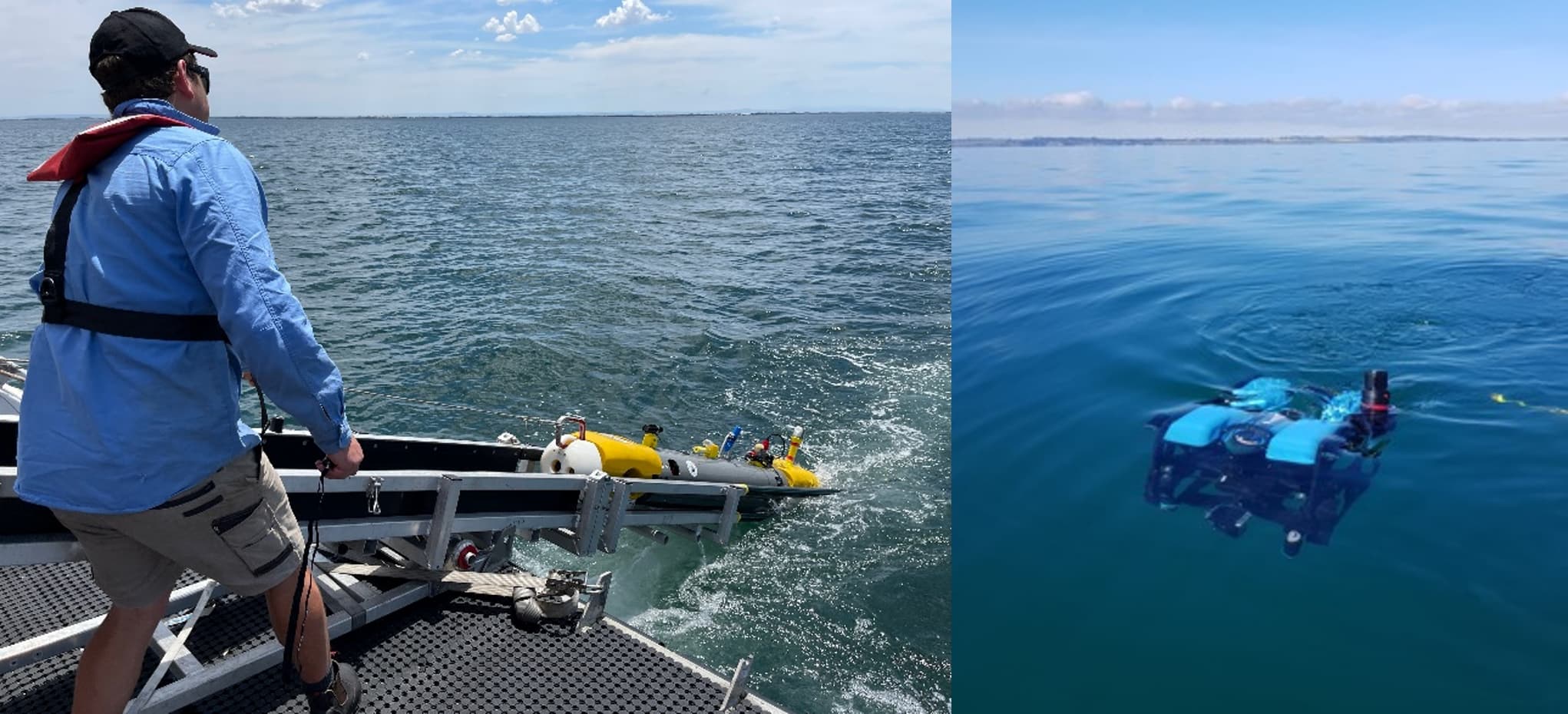
To investigate how contaminated sediments interact with other elements of the benthic ecosystem in the Bay, Fathom Pacific has partnered with the School of Agriculture, Biomedicine and Environment at La Trobe University to undertake ecotoxicological studies. Ecotoxicological analysis allows the investigation of bioavailability of contaminants to marine fauna and bioaccumulation across the food web. Studying the concentration of harmful contaminants in marine species is key to understanding whether pollutants found in sediments and water can be transferred to marine organisms.
- Fish and invertebrates were collected across 10 different zones, 7 represent impacted sites and 3 from control areas.
- Fish species include sand flathead and southern fiddler ray.
- Invertebrate species include Pyura spp., scallop, sea star, European fan worm.
- Tissues (muscle, liver, blood, gonads, mucous) and biomarkers were analysed.
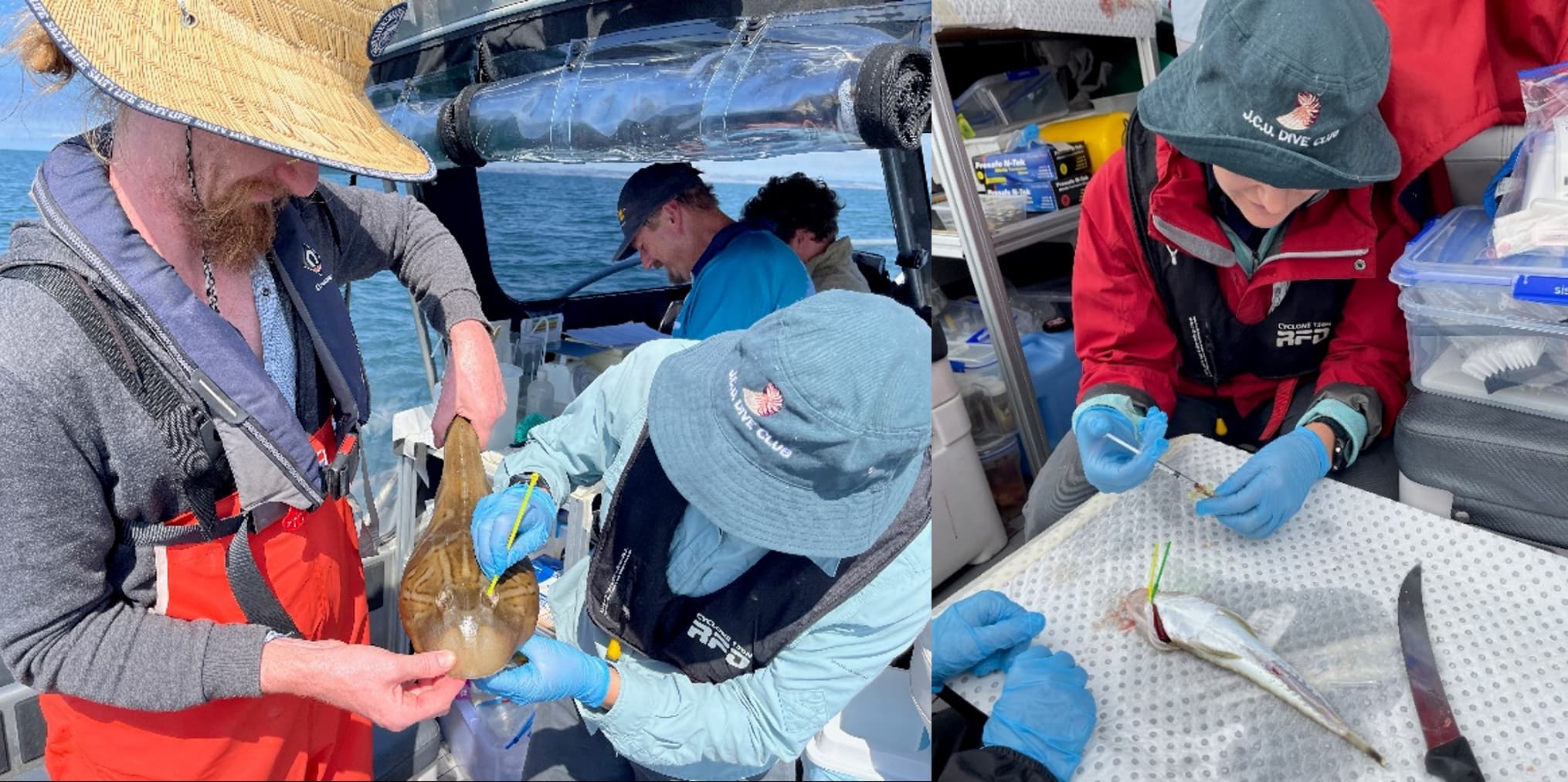
To facilitate data management for the project, Fathom Pacific have engaged Nordinson Studios. They have also developed a web portal to view project data stored in the qCore database. This provides visibility on completed field activities and accessibility to project data.
Project collaborations
The Seafloor Integrity project involves significant collaboration across multiple organisations. Fathom Pacific has partnered with several stakeholders across industry, academia, and agencies, who were involved in the planning phase and have informed the project plan.

Page last updated: 17/04/24
